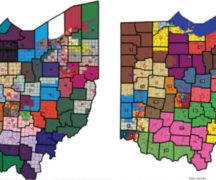Ohio Capital Journal
Federal grant money awarded to states to combat the opioid epidemic can also be used to address rising methamphetamine and cocaine use, according to language included in the final 2020 federal funding package.
The Combating Meth & Cocaine Act was introduced by Ohio U.S. Sen. Rob Portman, R-Cincinnati, and comes as law enforcement officials around Ohio have warned about a rise in methamphetamine use.
“When I talk to law enforcement, treatment providers and others on the frontlines of the drug crisis, I am increasingly hearing about the resurgence of methamphetamine and cocaine overdoses across Ohio,” Portman said. “This legislation will give states more flexibility to use federal opioid funding to address the resurgence of methamphetamine and cocaine, which will better address the on-the-ground reality of addiction in my state and many others.”
In 2016, U.S. Congress approved legislation to provide what are known as State Opioid Response Grants for states to combat opioid abuse. State Opioid Response Grants are designed to address the opioid epidemic broadly, but this grant funding has been interpreted to exclude resources for the rising abuse of stimulants such as meth and cocaine, a release from Portman’s office said.
The Combating Meth and Cocaine Act explicitly broadens the use of the State Opioid Response Grants to give states the flexibility to use this funding to address the resurgence of methamphetamine and cocaine, it said.
Portman’s office pointed to an October 2018 report from Ohio University saying psychostimulants were found in just nine unintentional overdose deaths in 2010.
That number rose to 556 in 2017, an increase of more than 6,000 percent, the release said. That same year, Ohio also had more than 1,500 individuals die of cocaine overdoses, almost a 140 percent increase from the year before, it added.
Law enforcement officials in Southeast Ohio were warning about the resurgence of meth in 2017, pointing to the increasing availability of mass-produced cartel methamphetamine as well as an uptick in users switching back and forth between opioids and meth.
(Image provided with permission from https://urinedrugtesthq.com/blog/)





